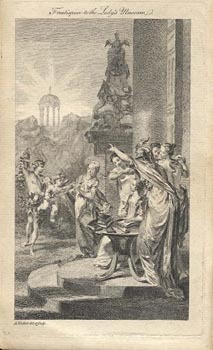Women
In the 18th century, women were considered mentally inferior to men, and their pursuit of education, particularly in the early portion of the century, was largely regarded as arrogant, not to mention useless. However, an increasing number of men, such as author Daniel Defoe and philosopher Jean Jacques Rousseau, began to argue that women should at least be educated enough to make them more pleasing companions for men, able to carry on intellectual conversations. The Unitarian and Quaker philosophies of parity between the sexes also helped change attitudes about women’s capabilities, as did the example of strong, pioneering spirits such as Hester Chapone and Hannah More.
An increasing number of women became writers, chiefly of novels, although many incurred scorn because of the lingering prejudices they faced. One 18th century writer, Anna Seward, the daughter of a teacher, had received an exceptional education for a woman of her time, beginning with learning John Milton’s poetry at age 3. Schoolteaching also became a more viable occupation for middle-class girls in the late 1700s. A number of boarding schools for girls were founded in the latter part of the century, teaching well-to-do young females manners as well as academics.
Chapone and other well-educated women—who mostly hailed from the professional and mercantile middle class—would gather in salons to talk intellectually with each other and with men. The men were known as “bluestockings” because they wore ordinary blue stockings, rather than dress stockings. And the women were disparagingly referred to by critics as “blue.”

